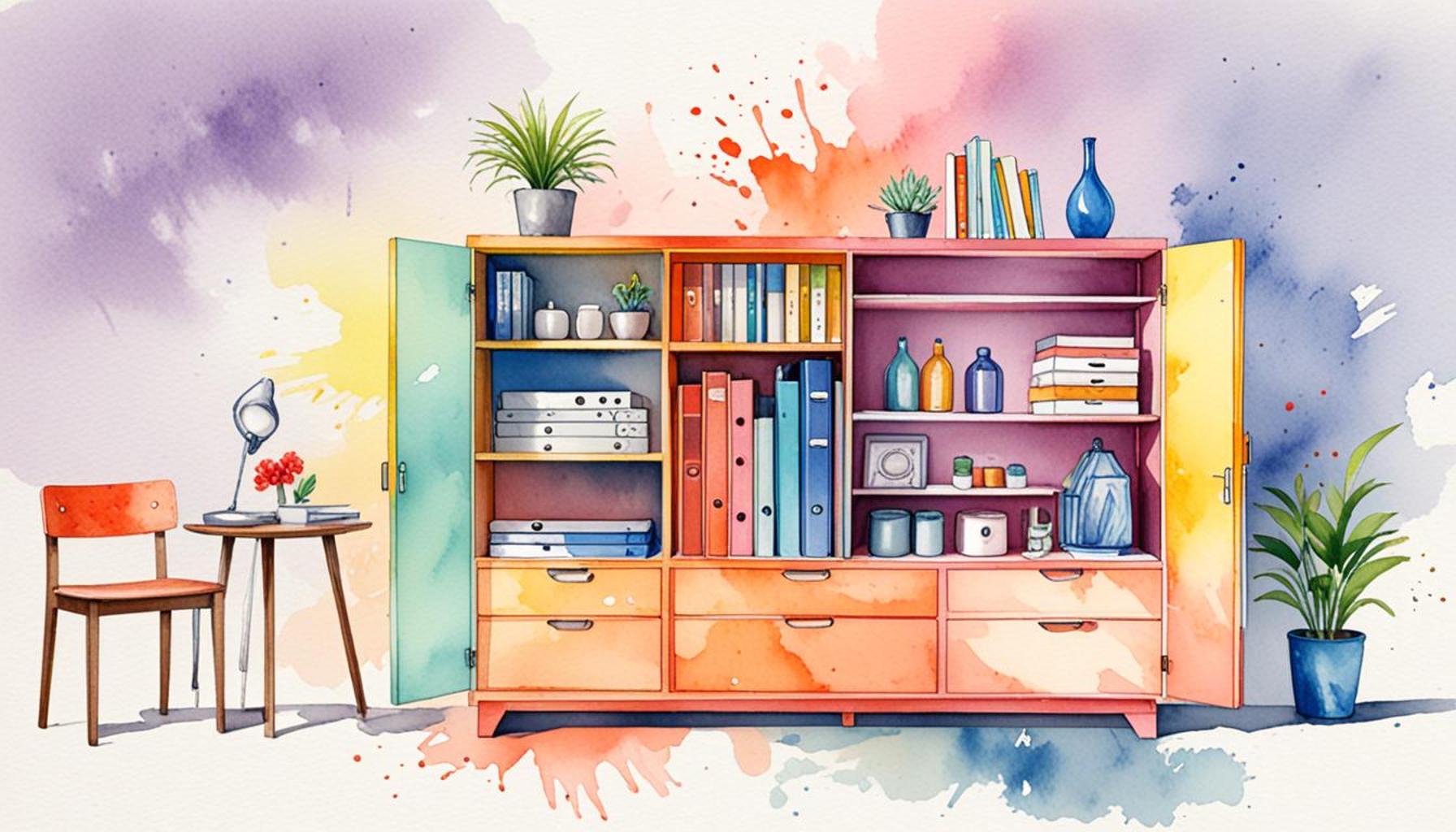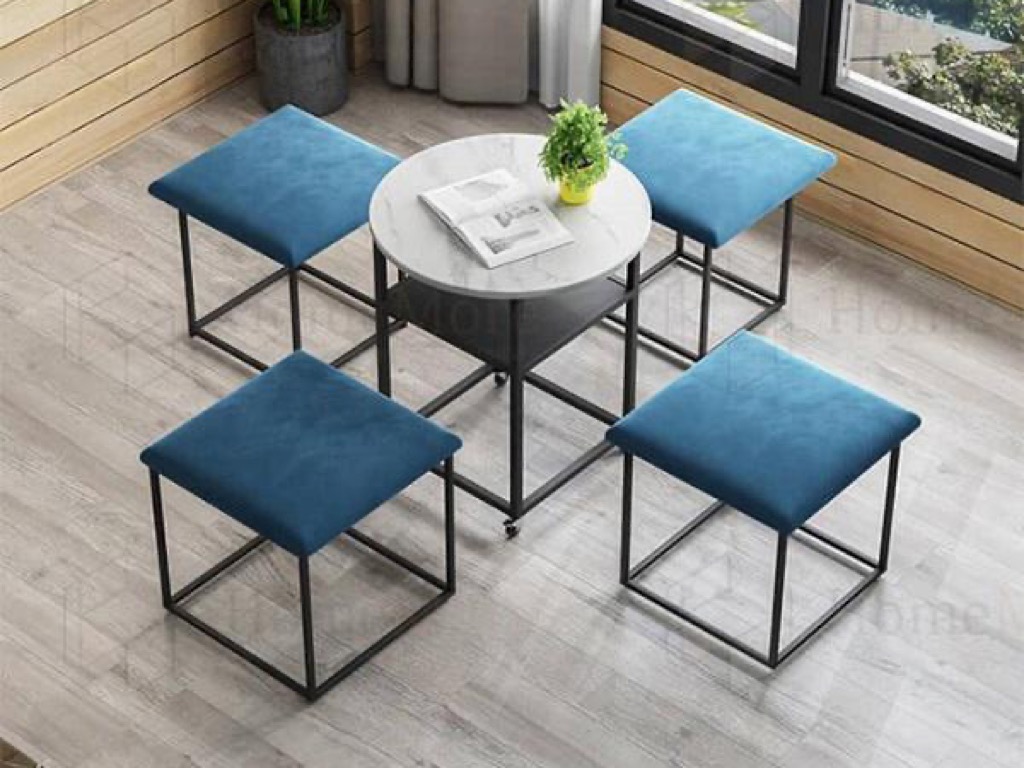Innovative Storage Solutions: Transforming Spaces with Multifunctional Furniture

Revolutionizing Space Management
With the ongoing trend of urbanization, especially in the United States, where cities are continually expanding while living spaces are becoming more condensed, navigating storage challenges has become increasingly essential. City dwellers, particularly in places like New York or San Francisco, often find themselves battling cramped apartments and limited square footage. This is where innovative storage solutions come into play, and multifunctional furniture stands at the forefront of this movement, seamlessly blending style with practicality.
Why Choose Multifunctional Furniture?
Multifunctional furniture serves a dual or even triple purpose, allowing homeowners to maximize their living spaces without sacrificing aesthetics. This versatility is particularly valuable in smaller homes, where each furniture piece must not only look good but also serve multiple functions. Let’s explore some key benefits:
- Versatility: Consider a sleek sectional sofa that effortlessly transforms into a comfortable bed for guests. Or imagine a coffee table with a lift-top that reveals hidden storage for books and blankets, clearing your space in an instant.
- Space-saving: Multifunctional furniture is ideal for maximizing minimal spaces. A wall-mounted desk can double as a dining area, perfect for a cozy apartment, while a Murphy bed tucks away neatly during the day, allowing for more usable space.
- Cost-effective: Investing in dual-purpose items can help homeowners save substantially. Instead of purchasing both a desk and a dining table, for example, a stylish drop-leaf table can serve both functions.
As homeowners increasingly prioritize flexibility and adaptability in their living spaces, emerging trends in design are responding accordingly. Furniture is being reimagined with features that cater to varying lifestyles:
- Hidden compartments allow for organization, providing discrete storage solutions that keep clutter at bay.
- Modular designs can evolve along with your needs, enabling customization – think of sectional sofas that rearrange as your social circle grows.
- Sustainable materials are increasingly used in the production of multifunctional pieces, aligning with the growing emphasis on environmental consciousness among consumers.
This transformation in home design is not just a passing trend; it represents a fundamental shift in how we conceptualize our living environments. With the right combination of innovation and style, multifunctional furniture has the potential to reshape your surroundings, making them not just livable, but enjoyable. As you explore the vast array of options available, you may find that your space can become a testament to both your aesthetic sensibilities and your practical needs.
DISCOVER MORE: Click here to learn how to create calming spaces

Embracing Smart Design Choices
The contemporary emphasis on innovative storage solutions underscores an essential evolution in residential design, particularly in urban settings where space is at a premium. Multifunctional furniture becomes not just a trend, but a necessity for those seeking to optimize their living environments. With thoughtful design and engineering, furniture items can transition seamlessly between uses, offering dynamic solutions to the challenges of limited space.
Types of Multifunctional Furniture
As more homeowners turn to multifaceted solutions, a variety of furniture types have emerged as champions of both style and utility. Here are some popular options redefining how we think about our living spaces:
- Convertible Sofas: These versatile pieces are designed to morph from a stylish couch into a bed, providing an ideal solution for accommodating overnight guests without the need for a full guest room.
- Storage Ottomans: More than just footrests, these chic ottomans often feature lift-up tops that reveal hidden compartments for storing blankets, books, or toys, making them a practical choice for family-friendly homes.
- Foldable Tables: Space-efficient drop-leaf tables can expand when needed for dining or work but can be easily tucked away when not in use, perfect for small apartments or studios.
- Beds with Built-in Storage: Sleek platforms and frames with under-bed storage solutions utilize typically wasted space, allowing residents to stash away seasonal clothing, shoes, or extra linens discreetly.
The versatility of these items is not merely about practical use; it also speaks to a broader lifestyle choice. Homeowners are increasingly attracted to the concept of minimalism, where every piece of furniture serves a purpose, enhancing the usability of their homes. As the minimalist trend continues to gain traction, multifunctional furniture aligns perfectly by offering straightforward solutions that eliminate excess while maintaining comfort and elegance.
The Impact of Technology
Technological advancements play a significant role in the evolution of multifunctional furniture. Innovative designs now incorporate features that were once only seen in high-end furniture or specialized applications. For instance, furniture equipped with charging ports, or built-in speakers enhance the functionality of everyday items. Smart furniture caters to tech-savvy consumers who seek both comfort and connectivity.
Moreover, lifestyle-oriented innovations take center stage in the world of storage solutions. For instance, desks that can easily convert into workstations or dining areas accommodate remote work demands while providing a warm, inviting space for family dinners. As the demand for practical living continues to soar, the ability to blend style with technology becomes crucial.
In essence, the surge of multifunctional furniture is a reflection of changing societal needs, driven by shifting lifestyles, urbanization, and an increasing awareness of sustainability. Embracing smart design choices empowers homeowners to create spaces that are no longer just functional but are a genuine reflection of their individuality. As consumers become more discerning in their choices, innovative furniture solutions will remain at the forefront of transforming homes into optimal, livable environments.
| Category | Details |
|---|---|
| Space Maximization | Multifunctional furniture allows homeowners to utilize every square foot, creating versatile living environments. |
| Cost Efficiency | Investing in multifunctional items reduces overall costs by eliminating the need for multiple pieces of furniture. |
In modern living, the need for innovative storage solutions cannot be overstated, particularly as urban dwellings often come with limited spaces. Multifunctional furniture has emerged as a key player in this domain, offering both practicality and style. By integrating various furniture functionalities, such as a sofa that converts into a bed or a coffee table that doubles as a desk, these solutions empower individuals to thrive in compact spaces without compromising on comfort or aesthetics.Furthermore, the aesthetic appeal of these transformative designs can redefine a home’s ambiance. By choosing pieces that are both functional and visually appealing, homeowners can create a space that truly reflects their personality, ensuring that every corner tells a story. In addition to enhancing functionality, these innovations promote a minimalist lifestyle, which resonates with today’s sustainability-driven mindset.The rise of multifunctional furniture also introduces a range of modular designs that can be customized to fit specific needs. This adaptability not only maximizes space but also allows for flexibility as lifestyle demands change, proving that smart home solutions are not just about space-saving but also about enhancing the quality of life. With so many advantages, exploring the realm of multifunctional furniture is essential for anyone looking to transform their living space into an efficient, attractive, and organized home.
DIVE DEEPER: Click here to learn more
Customization and Personalization in Multifunctional Design
As the demand for innovative storage solutions rises, so does the value placed on customization and personalization. Today’s homeowners are seeking furniture that not only meets their spatial needs but also reflects their unique style and preferences. This trend has propelled designers to innovate beyond one-size-fits-all solutions and focus on creating customizable furniture that adapts to individual tastes.
Tailored Multifunctional Furniture
From modular shelving systems that can be rearranged to suit any room layout to sectional sofas that can be split up for varied setups, the options for personalization are immense. Companies such as Modular Furniture Systems and Muji have made a mark by offering furniture that can be easily assembled, disassembled, or modified to fit the user’s needs. This flexibility not only makes them suitable for various living spaces but also lends a modern aesthetic that appeals to a wide array of consumers.
- Adjustable Desks: With the rise in remote work, desks that can transition from sitting to standing positions are becoming paramount. These desks allow individuals to tailor their workspace ergonomically, promoting better posture and productivity.
- Customizable Seating: Armchairs and loveseats equipped with interchangeable covers or modular components offer both comfort and the flexibility to change styles with evolving trends.
- Wall Units: Custom wall units provide tailored storage solutions while making a statement in living rooms. These units often feature a combination of shelves, closed cabinets, and even integrated media centers, all designed to meet the specific needs of homeowners.
Additionally, a significant aspect of this trend is the rise of DIY and upcycling movements that encourage people to personalize their furniture. Upcycling old furniture into multifunctional pieces or customizing flat-pack items to enhance their functionality is not only sustainable but also leads to unique storage solutions that reflect personal stories and experiences.
Sustainable Practices in Multifunctional Furniture
Alongside customization, sustainability is a critical consideration in the realm of multifunctional furniture. Consumers today are becoming increasingly conscious of their environmental footprint, and this awareness is shaping purchasing decisions. Sustainable materials, such as bamboo or recycled composite woods, are being utilized by brands focused on responsible production practices.
Incorporating sustainability into the design of multifunctional furniture not only serves to minimize waste but can also enhance the aesthetic appeal of pieces. Many designers emphasize the organic nature of these materials, showcasing the beauty of imperfections and natural textures. Furthermore, companies like IKEA are pioneering initiatives aimed at developing entirely circular products, with a commitment to reducing waste through smart design.
Moreover, opting for durable and timeless designs helps minimize the need for frequent replacements, further supporting sustainable living. The concept of investing in quality over quantity is becoming more prevalent, pushing consumers toward selecting multifunctional furniture that will withstand the test of time, both physically and aesthetically.
In summary, the trends surrounding customization and sustainability within multifunctional furniture highlight a fundamental shift in consumer behavior. These innovative storage solutions do more than just maximize space; they reflect a harmonious blend of personal expression, environmental responsibility, and a commitment to creating livable homes that adapt to the dynamic needs of modern life.
DISCOVER MORE: Click here to enhance your productivity
Final Thoughts on Innovative Storage Solutions
In a world where living spaces are becoming increasingly compact, the rise of innovative storage solutions through multifunctional furniture is not just a trend, but a necessity. As we’ve explored, the integration of customizable and sustainable practices into design is revolutionizing how we perceive and utilize our spaces. Homeowners and renters alike are recognizing that furniture can serve multiple purposes, adapting seamlessly to changing lifestyles and needs.
The flexibility and personalization of modern multifunctional pieces, from modular shelving to adjustable workspace solutions, cater to a diverse range of preferences and requirements. As seen with companies like Modular Furniture Systems and IKEA, the focus on customizability allows individuals to create environments that resonate with their aesthetic values while maximizing functionality. Furthermore, this trend encourages a more sustainable approach to consumption, supporting green practices that prioritize longevity and environmental consideration.
Equipped with these insights, readers are encouraged to explore innovative storage options that not only optimize their space but also enhance their quality of life. As we move forward, embracing multifunctional furniture design will not only transform our living spaces but will also reflect our commitment to sustainable living and personal expression. Whether you are redecorating a small apartment or rethinking an entire home layout, the potential of multifunctional furniture as a solution is boundless, offering a glimpse into a future where space is no longer a limitation but a canvas for creativity.


